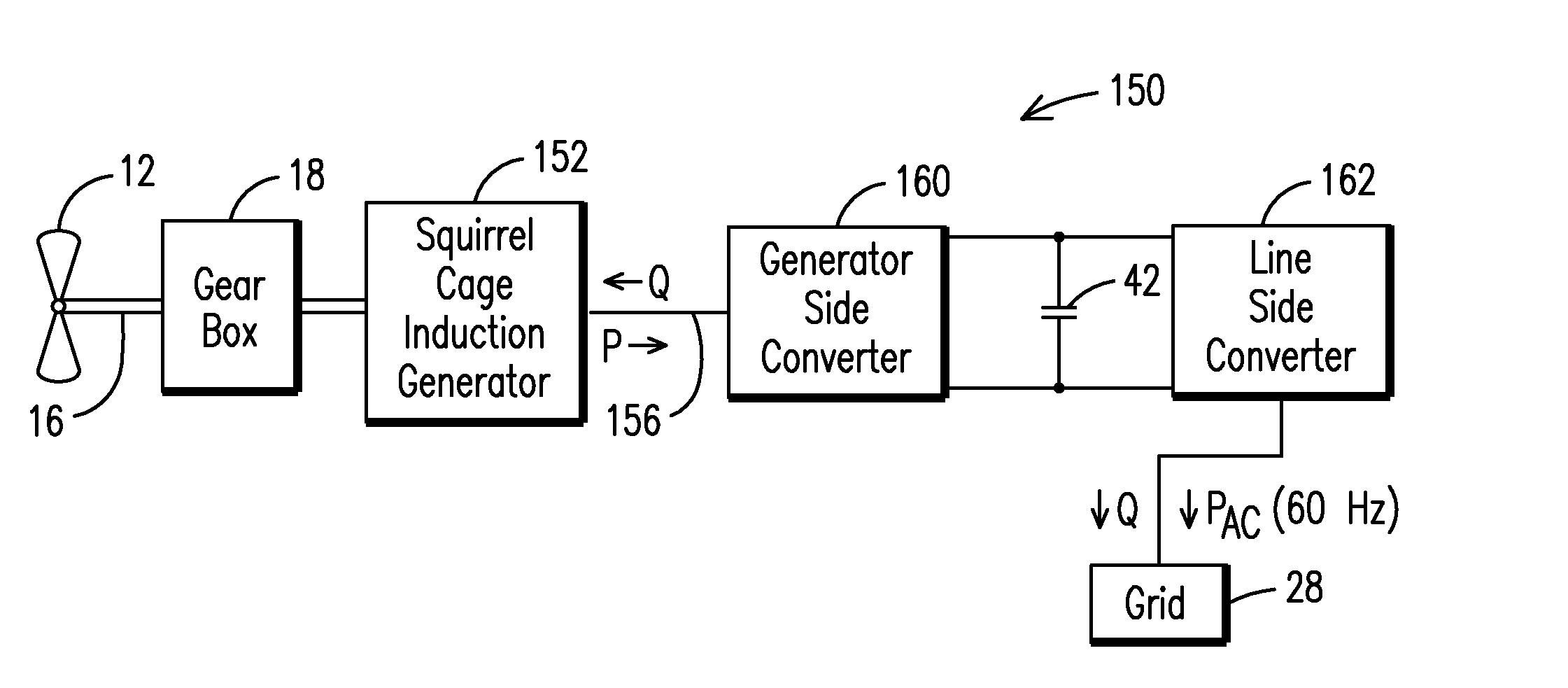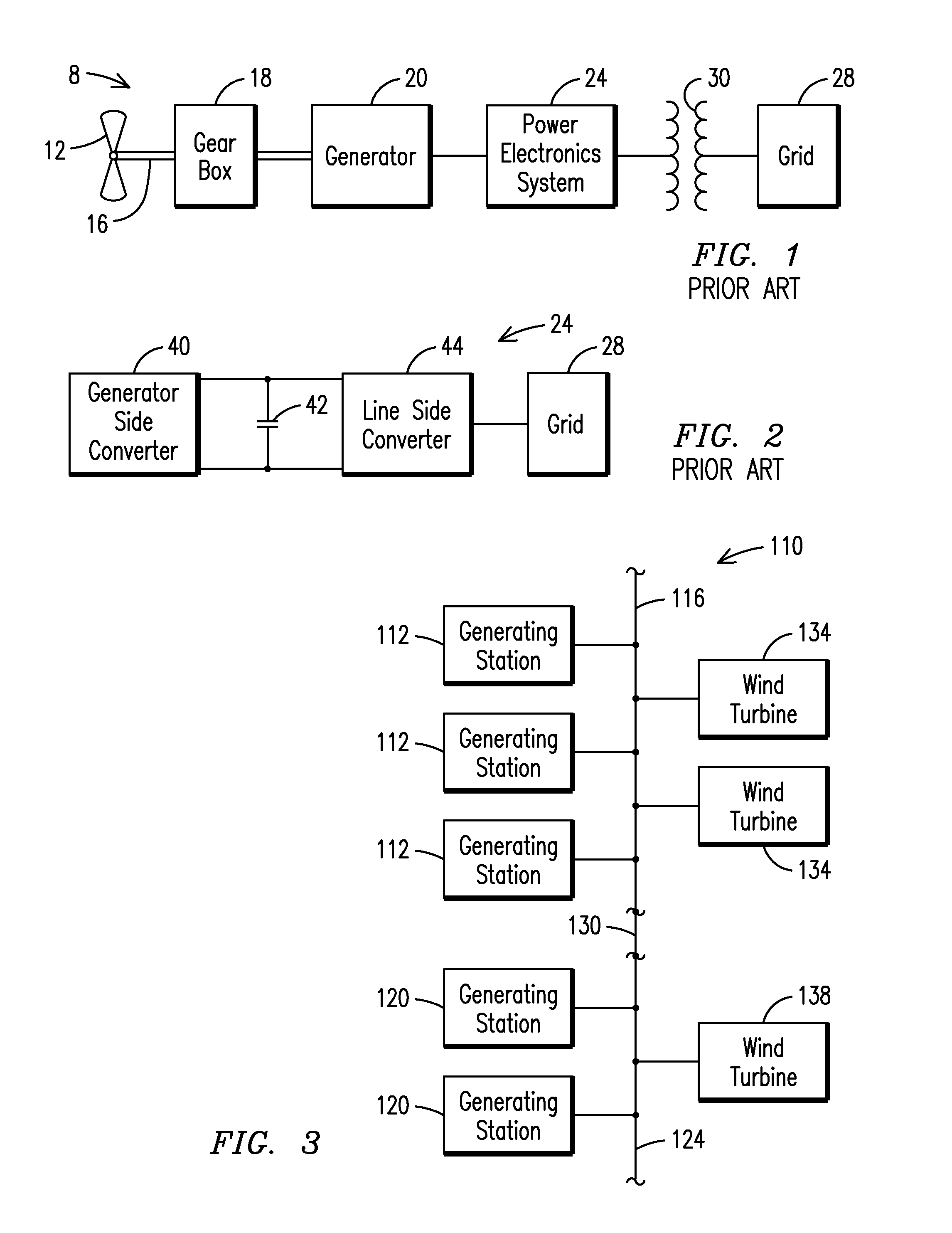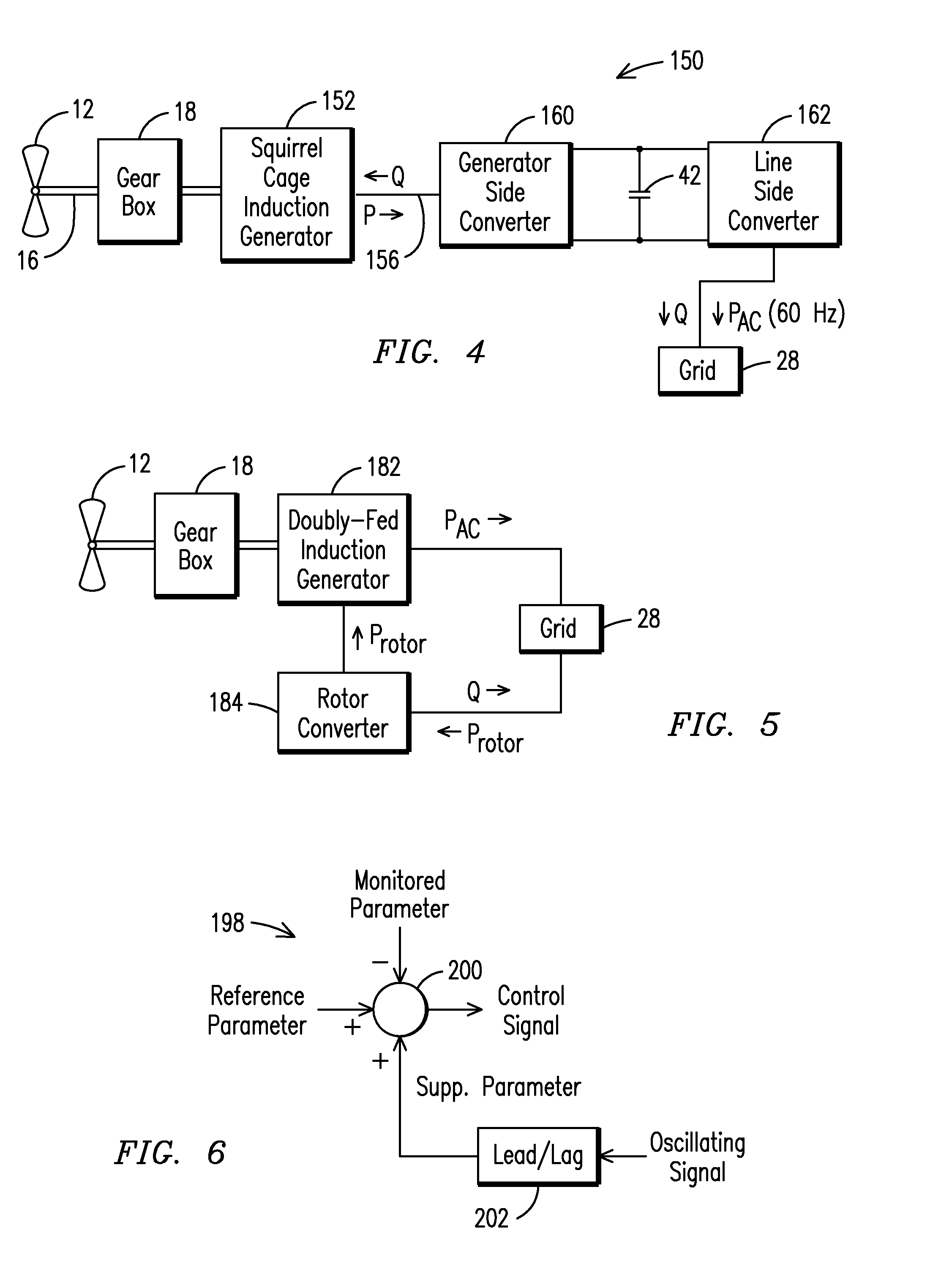Method and system for damping subsynchronous resonant oscillations in a power system using a wind turbine
- Summary
- Abstract
- Description
- Claims
- Application Information
AI Technical Summary
Benefits of technology
Problems solved by technology
Method used
Image
Examples
Embodiment Construction
[0028]Before describing in detail the particular methods and apparatuses related to SSR oscillation damping in a power system in accordance with various aspects of the present invention, it should be observed that the present invention, in its various embodiments, resides primarily in a novel and non-obvious combination of hardware, method steps and software elements related to said method and apparatus. Accordingly, the hardware, method steps and software elements have been represented by conventional elements in the drawings, showing only those specific details that are pertinent to the present invention so as not to obscure the disclosure with structural details that will be readily apparent to those skilled in the art having the benefit of the description herein.
[0029]The following embodiments are not intended to define limits of the structures or methods of the invention but only to provide exemplary constructions. The embodiments are permissive rather than mandatory and illust...
PUM
 Login to View More
Login to View More Abstract
Description
Claims
Application Information
 Login to View More
Login to View More - R&D
- Intellectual Property
- Life Sciences
- Materials
- Tech Scout
- Unparalleled Data Quality
- Higher Quality Content
- 60% Fewer Hallucinations
Browse by: Latest US Patents, China's latest patents, Technical Efficacy Thesaurus, Application Domain, Technology Topic, Popular Technical Reports.
© 2025 PatSnap. All rights reserved.Legal|Privacy policy|Modern Slavery Act Transparency Statement|Sitemap|About US| Contact US: help@patsnap.com



